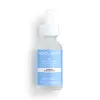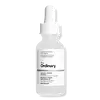What's inside
What's inside
 Key Ingredients
Key Ingredients

 Benefits
Benefits

 Concerns
Concerns

 Ingredients Side-by-side
Ingredients Side-by-side

Water
Skin ConditioningPropanediol
SolventPolysorbate 20
EmulsifyingHamamelis Virginiana Water
AstringentGlycerin
HumectantButylene Glycol
HumectantSalicylic Acid
MaskingAlcohol Denat.
AntimicrobialCocamidopropyl Betaine
CleansingPhenoxyethanol
PreservativeParfum
MaskingXanthan Gum
EmulsifyingSodium Chloride
MaskingEthylhexylglycerin
Skin ConditioningDisodium EDTA
Alcohol
AntimicrobialButylphenyl Methylpropional
PerfumingLinalool
PerfumingHexyl Cinnamal
PerfumingCitronellol
PerfumingGeraniol
PerfumingAlpha-Isomethyl Ionone
PerfumingHydroxycitronellal
PerfumingEugenol
PerfumingWater, Propanediol, Polysorbate 20, Hamamelis Virginiana Water, Glycerin, Butylene Glycol, Salicylic Acid, Alcohol Denat., Cocamidopropyl Betaine, Phenoxyethanol, Parfum, Xanthan Gum, Sodium Chloride, Ethylhexylglycerin, Disodium EDTA, Alcohol, Butylphenyl Methylpropional, Linalool, Hexyl Cinnamal, Citronellol, Geraniol, Alpha-Isomethyl Ionone, Hydroxycitronellal, Eugenol
 Reviews
Reviews

Ingredients Explained
These ingredients are found in both products.
Ingredients higher up in an ingredient list are typically present in a larger amount.
Phenoxyethanol is a preservative that has germicide, antimicrobial, and aromatic properties. Studies show that phenoxyethanol can prevent microbial growth. By itself, it has a scent that is similar to that of a rose.
It's often used in formulations along with Caprylyl Glycol to preserve the shelf life of products.
Polysorbate 20 is made by combining ethoxylation of sorbitan, ethylene oxide, and lauric acid. It is a mild cleansing agent, surfactant, and emulsifier.
As a surfactant, it helps collect dirt and oils for washing. Emulsifiers prevent oils and water from separating.
Polysorbate 20 also adds scent to a product. Since it is made using sorbitol, it has a sweet scent. Sorbitol can also be found in fruits such as apples and peaches.
The lauric acid used to create Polysorbate 20 is often derived from coconuts.
Polysorbate 20 may not be fungal acne safe.
Learn more about Polysorbate 20Salicylic Acid (also known as beta hydroxy acid or BHA) is a well-known ingredient for treating skin that struggles with acne and clogged pores. It exfoliates both the skin's surface and deep within the pores to help clear out buildup, control oil, and reduce inflammation.
Unlike AHAs (alpha hydroxy acids), salicylic acid is oil-soluble. This allows it to penetrate into pores which makes it especially effective for treating blackheads and preventing future breakouts.
Salicylic acid is also known for its soothing properties. It has a similar structure to aspirin and can calm inflamed or irritated skin, making it a good option for acne-prone skin that is also sensitive.
Concentrations of 0.5-2% are recognized by the U.S. FDA as an over-the-counter topical acne product.
It can cause irritation and/or dryness if one's skin already has a compromised moisture barrier, so it's best to focus on repairing that before introducing this ingredient into your routine.
While salicylic acid does not increase sun sensitivity, it’s still important to wear sunscreen daily to protect your skin.
If you are looking for the ingredient called BHA or Butylated Hydroxyanisole, click here.
Learn more about Salicylic AcidWater. It's the most common cosmetic ingredient of all. You'll usually see it at the top of ingredient lists, meaning that it makes up the largest part of the product.
So why is it so popular? Water most often acts as a solvent - this means that it helps dissolve other ingredients into the formulation.
You'll also recognize water as that liquid we all need to stay alive. If you see this, drink a glass of water. Stay hydrated!
Learn more about Water